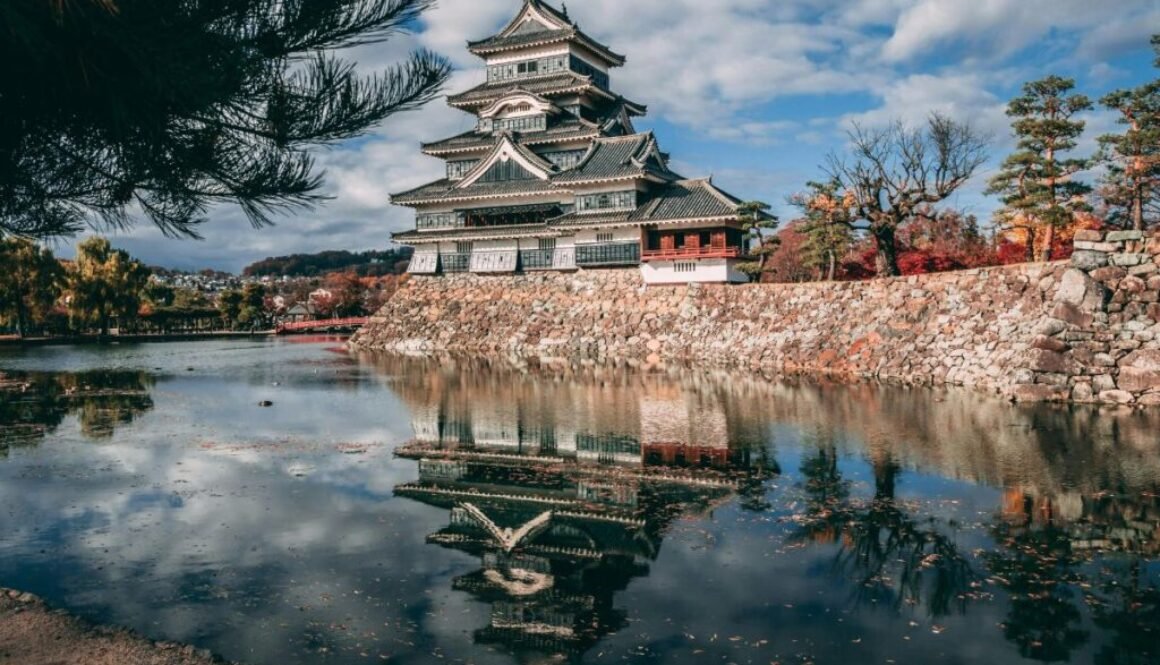4 Unforgettable Seasons to Visit Japan Without Regret
If Japan is on your travel wishlist, choosing the best time to visit can make your trip go from “nice” to absolutely unforgettable.
The 4 unforgettable seasons to visit Japan without regret offer unique beauty, cultural events, and special experiences that change throughout the year.
Japan is a country where every month has its own magic—whether it’s pink cherry blossoms in spring, glowing lanterns in summer, fiery leaves in fall, or white snow in winter. But depending on your travel style, budget, and interests, some seasons might be much better than others.
In this blog, you’ll find everything you need to know about when to go to Japan and what to expect in every season—so your trip becomes a memory of a lifetime.
🌸 Spring in Japan (March to May)
Why Spring is Special:
Spring in Japan is famous around the world because of the sakura (cherry blossom) season. Streets, parks, and riversides turn pink with blossoms, and locals celebrate with hanami (flower viewing) picnics.
Best Experiences:
Cherry blossoms in Tokyo, Kyoto, Osaka, and Hiroshima
Mount Fuji with a floral backdrop
Light jackets, warm sunshine, and clear skies
Not-to-Miss Festivals:
Hana Matsuri (April) – Celebrating Buddha’s birthday
Takayama Spring Festival – Floats, drums, and lanterns in Gifu
Pros:
Perfect temperatures (12°C to 20°C)
Instagram-worthy landscapes
Lots of seasonal food like sakura mochi
Cons:
Very crowded, especially late March to early April
Prices can be high due to global tourists chasing blossoms
☀️ Summer in Japan (June to August)
Why Summer is Special:
Summer in Japan is hot, humid, and full of life! From mountain escapes to coastal beaches, summer means outdoor fun and fireworks festivals.
Best Experiences:
Climbing Mount Fuji (July to early September)
Visiting Hokkaido for lavender fields and cool weather
Enjoying summer street food and shaved ice (kakigori)
Not-to-Miss Festivals:
Gion Matsuri in Kyoto (July) – Japan’s most famous festival
Sumidagawa Fireworks in Tokyo (late July) – Millions gather near the river
Tanabata (Star Festival) in Sendai – Wishes hung on bamboo trees
Pros:
Endless festivals, music events, and lively nightlife
Beautiful rural scenery and sunflower fields
Night-time fireworks across the country
Cons:
High humidity and rain (June is rainy season)
Crowded beaches and summer school vacations
Mosquitoes in forested areas
🍁 Autumn in Japan (September to November)
Why Autumn is Special:
Autumn offers cooler air, clear skies, and breathtaking koyo (fall foliage). If you love peaceful walks and colorful leaves, this is the ideal time.
Best Experiences:
Maple trees in Kyoto’s Arashiyama Bamboo Grove
Tea ceremonies surrounded by red and orange forests
Traditional ryokans (Japanese inns) with seasonal meals
Not-to-Miss Festivals:
Tsukimi (Moon Viewing) – Lanterns and mooncakes
Jidai Matsuri (Kyoto, October 22) – Historical costumes parade
Pros:
Comfortable weather (15°C to 22°C)
Great for hiking, sightseeing, and relaxing
Less crowded than spring
Cons:
Typhoon season spills into early September
Leaves peak late in November, so timing is key

❄️ Winter in Japan (December to February)
Why Winter is Special:
Winter in Japan is peaceful, magical, and offers everything from hot springs to snowy landscapes. Plus, Japan’s ski culture is world-class!
Best Experiences:
Skiing in Hokkaido and Nagano
Relaxing in outdoor hot springs (onsen) under falling snow
Seeing snow monkeys bathe in hot water in Jigokudani Park
Not-to-Miss Festivals:
Sapporo Snow Festival (February) – Giant ice sculptures and snow slides
Oji Fox Parade in Tokyo (December 31) – A mystical new year’s event
Pros:
Less crowded tourist spots
Lower hotel prices (except Christmas & New Year)
Unique Japanese winter foods like nabe and oden
Cons:
Can be freezing cold (as low as -10°C in Hokkaido)
Some mountain roads may close
Shorter daylight hours
🧭 Best Time by Travel Interest
For Cherry Blossoms: Late March to early April
For Hiking and Nature: May or November
For Snow & Skiing: January to February
For Budget Travel: June or early December
For Fewer Crowds: February and mid-November
For Cultural Festivals: July and October
🏷️ Travel Tips by Season
🌸 Spring Tips:
Book train passes and hotels early
Check official sakura forecast maps online
Try seasonal sweets like sakura-flavored ice cream
☀️ Summer Tips:
Stay hydrated and wear UV protection
Use mosquito repellent in forest areas
Wear light, breathable clothes
🍁 Autumn Tips:
Ideal for visiting temples and gardens
Great photo season, bring a good camera
Avoid typhoon dates (check forecasts)
❄️ Winter Tips:
Dress in layers and bring gloves
Use IC cards for smooth travel in snow cities
Enjoy warm local dishes like ramen and hotpot

🧳 Don’t Miss – The Ultimate Wrap-Up
If you’ve made it this far, you already know one thing—Japan is beautiful all year round. But the real magic happens when you match your trip to the right season. That’s why we created this guide: to help you explore the 4 unforgettable seasons to visit Japan without regret.
Let’s recap the key takeaways:
Spring, from March to May, is your go-to season for natural beauty and blooming cherry blossoms. It’s the busiest time to visit Japan, and with good reason. From Hanami parties in Ueno Park to the dreamy canals of Kyoto, everything feels alive and colorful. If you’re a romantic or a nature-lover, this is your season.
Summer, from June to August, bursts with energy. Though it brings heat and humidity, it also brings joy, parades, fireworks, and mountain escapes. It’s a season full of surprises—whether you’re climbing Mount Fuji, partying in a yukata, or watching fireworks light up the Tokyo skyline. Just don’t forget your sunscreen and insect repellent!
Autumn, from September to November, is the quiet superstar. While others chase blossoms or snow, smart travelers stroll through flame-colored temples and zen gardens in total peace. It’s perfect for scenic photographers, cultural enthusiasts, and those who enjoy comfortable, breezy travel.
Winter, from December to February, is Japan’s coziest secret. With magical snowfalls, glowing lanterns, and steaming onsens, it offers a slower, more peaceful kind of charm. Whether you’re skiing, soaking, or savoring a bowl of hot soba, Japan’s winter is full of soul.
Still can’t decide? Here’s a cheat: If it’s your first trip to Japan, go in spring or autumn. They offer the best mix of weather, food, and cultural exposure. But if you’re a second-time traveler or adventurous spirit, the extreme seasons—summer and winter—offer rare, immersive experiences that most tourists miss.
In the end, Japan isn’t just about visiting a country—it’s about timing your journey to dance with the season. Each one tells a different story. Choose the season that matches your mood, your bucket list, or your dream—and your Japan trip will be truly unforgettable.
So pack wisely, plan smartly, and go when your heart feels right. Because no matter when you visit, Japan will welcome you with a bow, a smile, and a story you’ll never forget.
Also Read
10 Smart Tips for First-Time Japan Travelers

